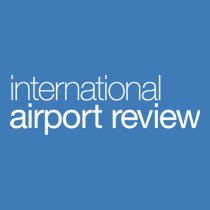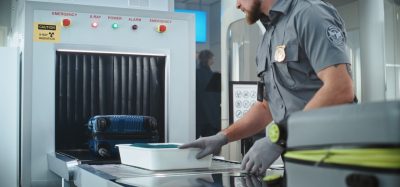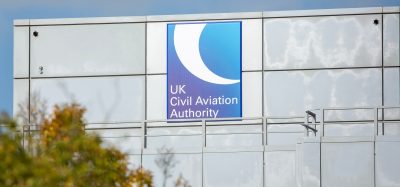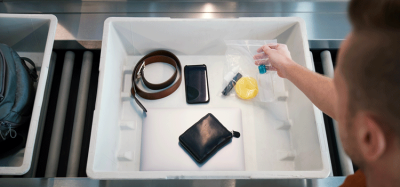Securing the States
Posted: 29 March 2012 | Chris McLaughlin, Assistant Administrator for Security Operations at the Transport Security Administration
Over the past year, the Transpor – tation Security Administration (TSA) has made great strides to implement smarter, intelligencedriven, and more efficient screening procedures at airport checkpoints around the country. The agency is moving away from a one-size-fits-all security model to an approach built on mitigating risk. These strategic enhancements to security protocols are helping transform the TSA into a more focused and high-performing counterterrorism agency. This reflects a fundamental shift that requires a determined, dedicated and co-ordinated workforce, as well as a clear vision for the future of aviation security. TSA possesses all of these ingredients and is in the midst of implementing several components of this risk based security concept at airports nationwide.
Undertaking these efforts allows TSA to focus its resources to strengthen security and improve the passenger experience at security checkpoints by modifying, or finetuning, screening procedures and using the latest technologies.
TSA’s risk based approach to security comprises several initiatives, including expanded behaviour detection techniques, refined screening of passengers aged 12 and under, and the passenger pre-screening initiative, TSA Pre✓™. Additionally, TSA continues to support the aviation industry’s efforts to expedite airline pilot screening through a known crew member initiative.


Over the past year, the Transpor – tation Security Administration (TSA) has made great strides to implement smarter, intelligencedriven, and more efficient screening procedures at airport checkpoints around the country. The agency is moving away from a one-size-fits-all security model to an approach built on mitigating risk. These strategic enhancements to security protocols are helping transform the TSA into a more focused and high-performing counterterrorism agency. This reflects a fundamental shift that requires a determined, dedicated and co-ordinated workforce, as well as a clear vision for the future of aviation security. TSA possesses all of these ingredients and is in the midst of implementing several components of this risk based security concept at airports nationwide.
Undertaking these efforts allows TSA to focus its resources to strengthen security and improve the passenger experience at security checkpoints by modifying, or finetuning, screening procedures and using the latest technologies.
TSA’s risk based approach to security comprises several initiatives, including expanded behaviour detection techniques, refined screening of passengers aged 12 and under, and the passenger pre-screening initiative, TSA Pre✓™. Additionally, TSA continues to support the aviation industry’s efforts to expedite airline pilot screening through a known crew member initiative.
Join us live: Shaping the Next Generation of Hold Baggage and Air Cargo Screening
Join us live for an insightful webinar on 11th December at 14:00 GMT, in collaboration with Smiths Detection, as we explore the strategic balance of operational efficiency, regulatory compliance, and sustainability in high-volume security environments.
This session offers a focused look into future-proofing your security strategy.
Key learning points
- Cost Reduction: Strategies to minimize bag travel time while simultaneously reducing operational costs.
- Regulatory Roadmap: Insights into the next wave of regulatory changes and their impact on future investment decisions.
- Sustainable Systems: Practical approaches to building sustainability into security systems and lowering the total cost of ownership (TCO).
- Scalable Solutions: Real-world examples of scalable systems supporting current airport growth and preparing for tomorrow.
Register now for expert insights, case studies, and actionable strategies on operational efficiency!
TSA’s decision to move toward a risk based approach to strengthening aviation security was based on several premises, including; the majority of airline passengers are low risk; information voluntarily provided by passengers can help segment the population in terms of risk; behaviour detection and interviewing techniques are used around the world and should be strengthened as part of the screening process; and strengthen security by focusing on unknown, higher-risk individuals while expediting the process for known and trusted travellers.
To gain system-wide efficiencies and give the American people the best return on their investment in TSA, the agency must accelerate efforts to strengthen security by using risk-based decision making to expedite screening and by challenging industry partners to continue developing new and better technologies.
TSA Pre✓™ is an important part of these efforts. It is an expedited screening initiative that enhances aviation security by strengthening the pre-screening process, thereby allowing officers to focus more of their resources on those individuals who may present a greater risk to the security of the aircraft. As an added benefit, expediting the security screening process through TSA Pre✓™ may improve the overall travel experience for everyone. With TSA Pre✓™, the agency makes risk assessments on passengers who voluntarily participate prior to their arrival at the airport checkpoint. Passengers eligible for TSA Pre✓™ may be allowed to keep their shoes and light jacket on, as well as leave their liquids and laptops in their carry-on bag as they go through the screening process. TSA Pre✓™ includes U.S. citizens who are members of existing Customs and Border Protection (CBP) trusted traveller programmes such as Global Entry, as well as eligible airline frequent flyers.
After determining a passenger is eligible for expedited screening through TSA Pre✓™, information is embedded in the boarding pass and read at designated checkpoints. At this point the passenger may be referred to a lane for expedited screening.
The TSA began evaluating TSA Pre✓™ in autumn 2011, through partnerships with Delta Air Lines and American Airlines at airports in Atlanta, Detroit, Dallas and Miami. Feedback from travellers was overwhelmingly positive and TSA expanded the evaluation to Las Vegas, Minneapolis, Los Angeles and Salt Lake City before announcing plans to take TSA Pre✓™ nationwide. The initiative became operational at New York’s JFK on 28 February, 2012, and by the end of the year TSA anticipates TSA Pre✓™ benefits will be available at 35 of the country’s busiest airports.
As the TSA Pre✓™ initiative continues expanding, TSA also expects additional airlines to offer TSA Pre✓™ benefits to passengers as they become operationally ready to do so.
TSA will always retain the ability to incorporate random and unpredictable security measures, and at no time will any individual be guaranteed expedited security screening.
In addition to efforts such as TSA Pre✓™, TSA is always evaluating ways to strengthen security and make the most efficient use of its resources. Airline pilots, for example, undergo thorough and repeated background checks as a condition of their employment. Because of this, TSA supports the known crew member effort developed by the Air Line Pilots Association (ALPA) and Airlines for America (A4A) to expedite the screening process for airline pilots.
The system adopted for screening pilots at select airports ties airline employee databases together in a seamless way and enables TSA officers to positively verify identity and employment status of crew members. The initiative successfully leverages currently available technology to provide an effective and cost efficient solution. Recognising airline pilots as trusted aviation security partners is another example of TSA’s effort to use its resources in a more focused way.
In September 2011, new screening procedures for passengers age 12 and under were implemented. Understanding that travellers in this age group pose less of a risk to aviation security, TSA concluded that they should be allowed to leave their shoes on during screening. Additionally, these procedures allow passengers 12 and under multiple passes through a metal detector or advanced imaging technology unit to resolve any anomalies, thereby greatly reducing the number of instances in which an officer would need to perform a pat-down on anyone in this age group.
As part of its layered approach to strengthening aviation security, TSA also trains and deploys behaviour detection officers, or BDOs, to use non-intrusive techniques to observe passengers as they enter the security checkpoint and assess whether they are exhibiting any signs of deception or bad intent. Used by aviation security professionals around the world, behaviour detection programmes such as this are effective in identifying people who are engaged in deceptive and/or illegal activity and fear discovery. In 2008, for example, BDOs in Orlando identified a person attempting to travel with all the components necessary to make a pipe bomb.
In 2011, TSA began piloting an expanded behaviour detection programme at select locations in which specialised behavioral analysis techniques are used to determine if a traveller should be referred for additional screening at the checkpoint. The vast majority of passengers at the pilot checkpoints experience a ‘casual greeting’ conversation with a BDO as they go through identity verification. This additional interaction is also used by security agencies worldwide and enables officers to better verify or dispel suspicious behaviour and anomalies.
If more information is needed, the officer will refer the passenger to a second BDO for a more thorough conversation. This officer will then gather information to make a more informed assessment regarding whether to refer the passenger for additional screening.
Airport security checkpoints are only one part of our multi-layered system for aviation security. Other parts, both seen and unseen by the public, include intelligence gathering and analysis, explosives detection canine teams, federal air marshals, and closed-circuit television monitoring.
Individually, none of these efforts or initiatives would be sufficient to provide the most effective transportation security in the most efficient possible way. But when they are added to the multiple layers of security already in place throughout our nation’s transportation networks they add even greater strength and resilience against the creative and adaptive enemy TSA continues to face.
TSA appreciates the ongoing support and cooperation of the aviation industry and the travelling public and strives to continue strengthening transportation security and improving, whenever possible the overall travel experience for all. TSA is committed to ensuring individuals and families travelling can do so securely throughout the Nation’s transportation systems.
About the author
Christopher McLaughlin was named TSA’s Assistant Administrator for Security Operations in July 2011. In this role, he is responsible for providing executive management of daily field operations for a workforce of more than 50,000 employees at more than 450 airports nationwide. In addition to operational management of field operations, he is also responsible for regulatory compliance, budget and financial requirements, program planning, and partnering with security operators in other modes.
Prior to his appointment this position, Mr. McLaughlin was the Federal Security Director at Denver International and Fort Collins-Loveland airports. As the FSD, he led a team of more than 950 employees and managed a budget of $50 million. Mr. McLaughlin was the senior Department of Homeland Security official responsible for the implementation of transportation security for aircraft, airports and other transportation facilities. This includes operations related to screening, regulatory compliance, security and related law enforcement in the Denver area.
McLaughlin is a seasoned leader with extensive experience in managing multi-million dollar projects, improving operational and personnel performance, and developing operational plans and strategies. Before joining TSA in 2009, McLaughlin was Senior Director with Frontier Airlines where he provided leadership to a staff of more than 1,400 employees and managed a $68 million budget. In that role, he oversaw a multi-million dollar remodeling of Frontier’s lobby operation at Denver International, resulting in a 45 per cent improvement in efficiency.
Also at Frontier Airlines, from 2005 to 2007, McLaughlin was Director of Station Operations, providing senior management and visionary leadership to nearly 1,000 employees and managing a $75 million budget. Prior to that, he was Hub Director with Air Wisconsin Airlines Corporation at Washington-Dulles International Airport.
He graduated Magna Cum Laude from Connecticut College in 1993 with a Bachelor of Arts.
The International Airport Summit is open for registration!
Date: 19 – 20 November 2025
Location: JW Marriott Hotel Berlin
At our flagship event of the year, we will dive into the future of airport operations, with expert-led sessions on passenger experience, innovative smart technologies, baggage handling, airside operations, data, security, and sustainability.
This is where global airport leaders come together to share insights, challenges, and real-world solutions.
Limited complimentary passes are available for eligible professionals – first come, first served!
Issue
Related topics
Related organisations
Airlines for America (A4A), Transportation Security Administration (TSA)


















